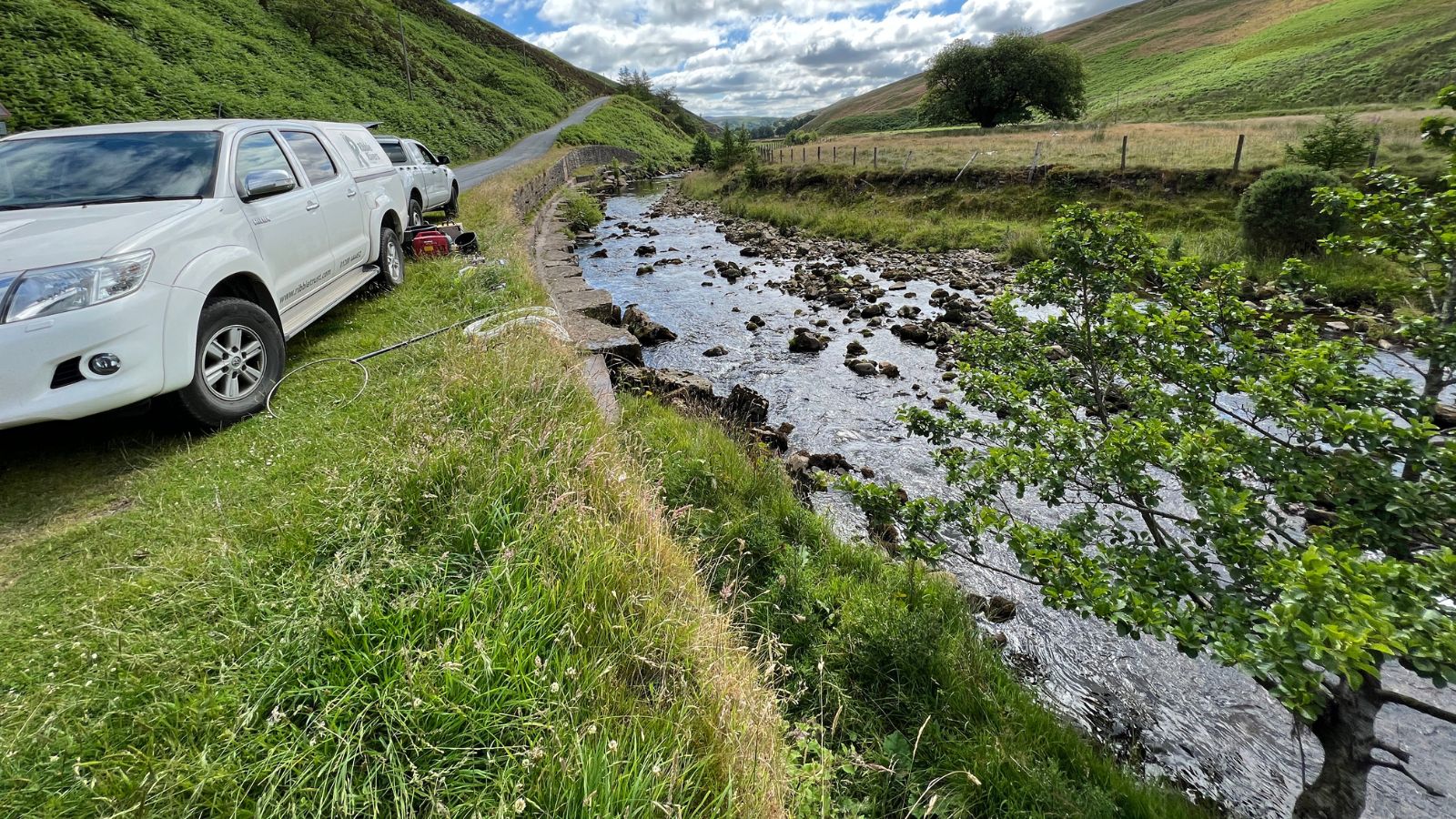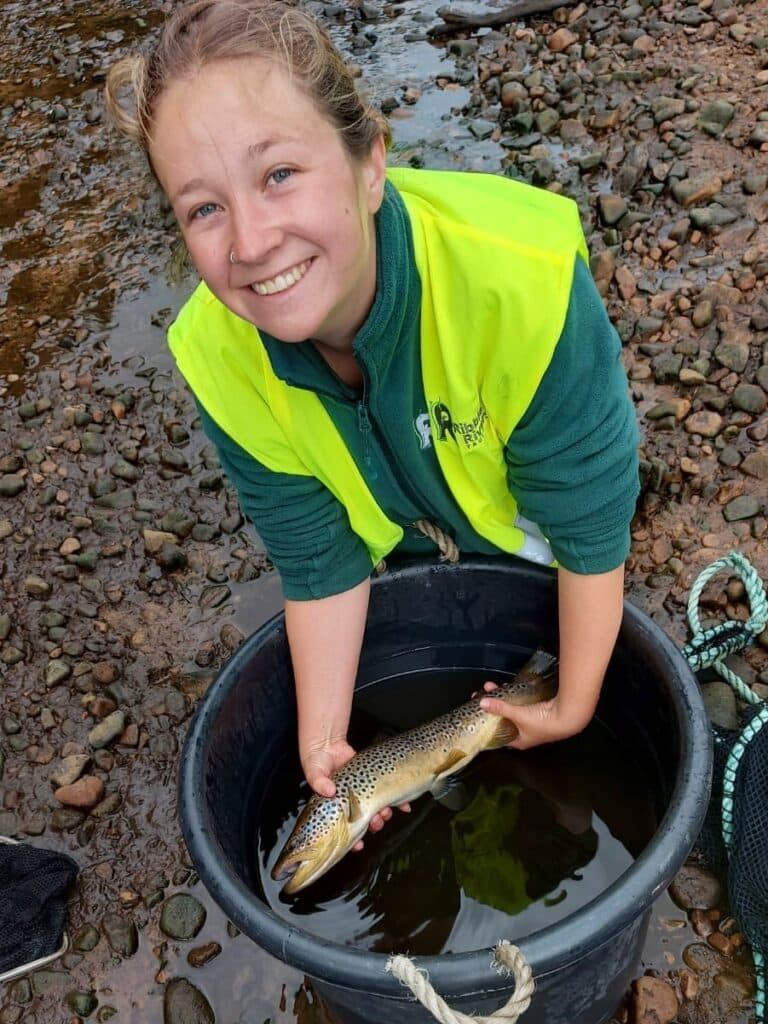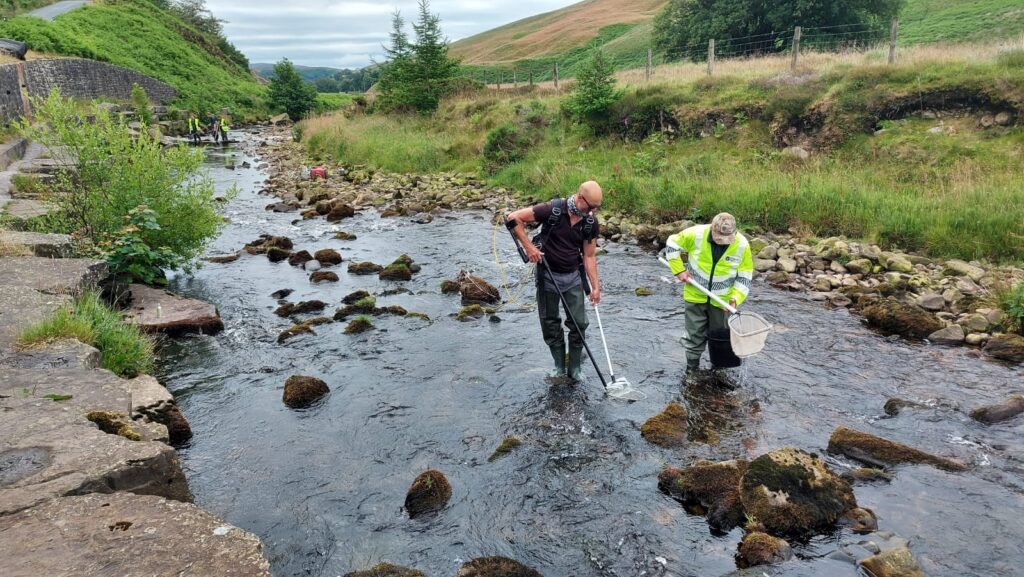Langden Brook is one of the not so hidden gems in the Ribble catchment. A tributary of the River Hodder, this area is one of the few remaining strongholds for salmon. It is also an important part of our drinking water infrastructure.

As part of the Stocks Reservoir network of watercourses and abstraction points, Langden Brook features a gravel trap which is part of United Utilities infrastructure. The way that these watercourses have been modified means that gravel and sediment move downstream into these traps. These traps then need to be emptied periodically. Not only does this build-up of gravel and sediment create problems of its own, but it also means that the gravel and sediment cannot move downstream as it would in a more natural river system.

Unfortunately, this isn’t great for salmon. The build-up of gravel makes rivers and streams harder to navigate. More importantly it also reduces the volume of gravel, which salmon need to lay their eggs, elsewhere in the river system.
This is particularly bad news as one of the main reasons for the decline in salmon numbers is the limited survival of eggs and fry (young salmon). Despite being a seemingly healthy area with good salmon numbers, Langden Brook is not so beneficial for the next generations.
Fish rescues and gravel piles
Thankfully Ribble Rivers Trust have been able to team up with the Hodder Consultative, United Utilities, and the Environment Agency. Together we’ve worked to resolve this issue. So, we’re extracting the gravel from the trap, then moving it to the areas that have been losing this valuable substrate.
Despite being months in the planning, this work took place in a very restricted period of time. Of course, one of our main concerns is fish welfare. As reservoir had to be drained, our first task was a fish rescue. The first part of the rescue saw 1,500 fish successfully and safely moved. Our contractors, Wade Group, then began to drain the water, with our team electrofishing the area to collect any remaining fish. The contractors were then able to start with the gravel and silt removal. In the meantime our team carried out another fish rescue at the site of the gravel reintroduction (400 meters downstream).

All together around 1,500 tons of gravel were excavated from the site. A pretty dramatic figure compared to the 400 tons which we expected to remove!
The great news is that there was a great variety of fish found during our rescue. Most of the fish caught were brown trout, with plenty of bull heads, minnows, stone loach and even some salmon and eels!
In time these gravels will build up once again. Going forward we’re hoping to once more work with United Utilities and the Hodder Consultative to repeat this project.
A special thank you goes to;
-The Environment Agency’s Darren Wilson and Damien Linney who both helped with the huge fish rescue.
-Neil Beattie from United Utilities who helped to enable the project.
–Wade Group who once again provided the people (and machine) power to help get our work done.

